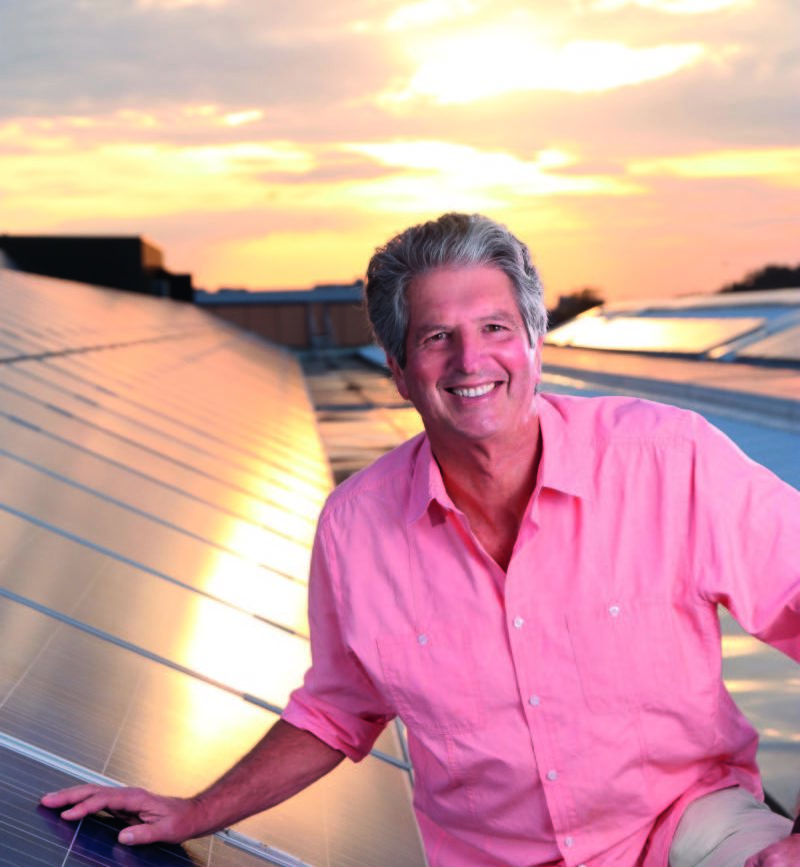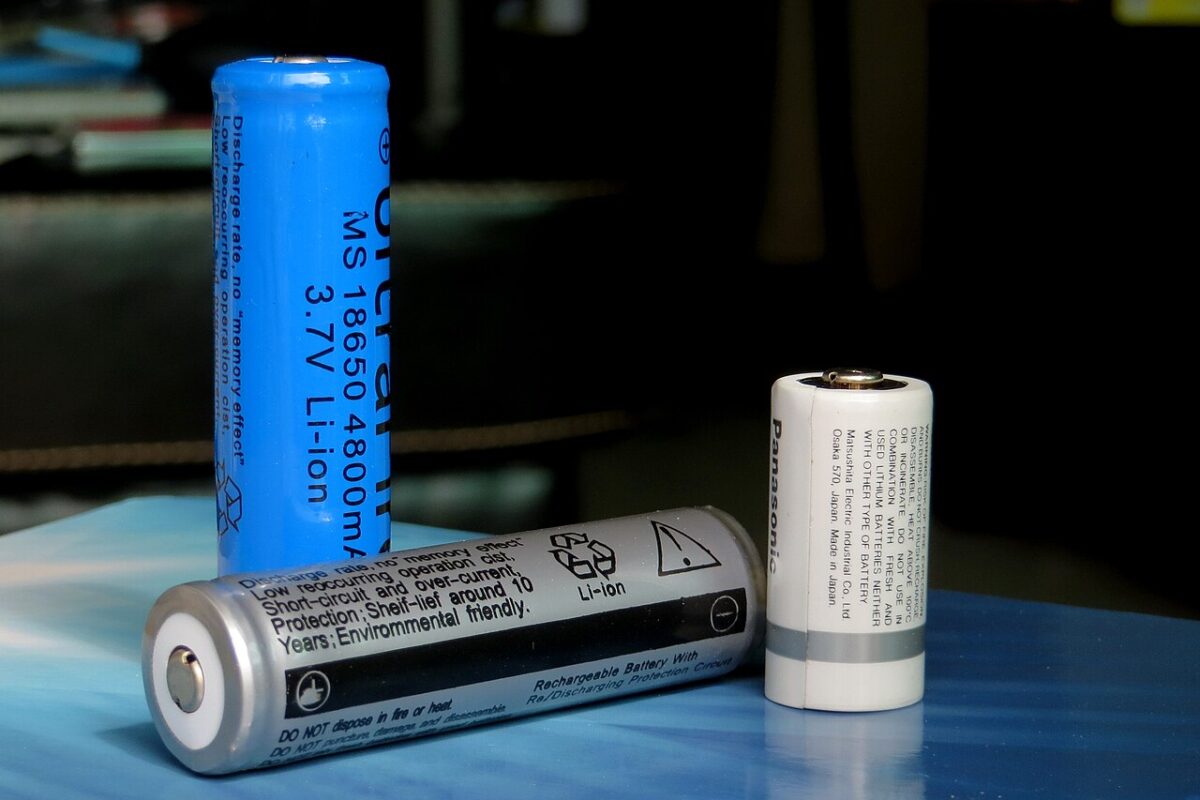A decrease of 10 degrees Celsius in operating temperature could double the lifespan of solar panels and boost their performance every day. Researchers at the University of New South Wales have completed a successful desk-top study that modelled methods yielding an effective 2-3 degrees Celsius cooling of solar panels, and are following up with live experimental research to verify and expand on that effectiveness.
Although constantly exposed to heat, solar modules work better under cooler conditions.
In an exclusive interview with pv magazine Australia, UNSW’s Scientia Professor Martin Green, who is also Director for the Australian Centre for Advanced Photovoltaics, explained: 5 degrees Celsius reduction in operating temperature can yield a 2% improvement in module performance on a hot day; and the degradation which limits module lifespan and is largely catalysed by heat can also be mitigated by reducing their operating temperatures — five degrees reduction in operating temperature is expected to result in 50% increase in project life.
Results of the desktop study — led by UNSW Professor Renate Egan, partly funded by the Australian Renewable Energy Agency (ARENA) and carried out in collaboration with 3M and solar system innovators 5B — were published at the end of March, and showed that of the novel methods explored for lowering the temperature of solar panels, vortex generators and glass texturing, have so far proved to be the most effective solutions.
“Glass texturing is an interesting approach,” says Green, “because people have looked at it before, but from the point of view of the visible optics — trapping more sunlight into the cells and things like that. We’re looking at it from the thermal point of view where texturing can improve the thermal emissivity of the module, that is it can improve radiative dissipation and its increased surface area can also improve convective losses.”
Chilling out in the vortex
On the intriguing topic of vortex generators, he says that left to do their job in the sun, modules heat up by some 30 degrees Celsius. This generates airflows up the front and back surfaces of the module, and as the flow of air gets hotter along the back surface, it tends to get trapped against the module.
“It’s a nice laminar flow along the back, which you might want to be designing for in racing cars because you get minimum interaction with the surrounding air,” says Green. But it’s not good for heat transfer, or dissipating heat, for which he says “you want the air to be turbulent as it passes over the module”.
Vortex generators, aka small plastic “fins” added to the back of the solar panel, “break up the laminar flow of air and create regions of turbulence that can greatly increase heat transfer from local areas,” says Green.
The numerical study resulted in three patents being filed, and was extremely useful in establishing the feasibility of several approaches before proceeding to potentially costly physical testing.
It’s quite difficult to do measurements in the real world, says Green, “because cooling effects can be subtle”, but with the development of engineering simulation software such as COMSOL and Ansys systems used in this instance, researchers can test and adjust design approaches “until you’ve achieved a difference that’s big enough” to warrant investing more effort in experiments, says the Professor.
A reciprocal relationship with 5B
Solar innovators at 5B, renowned for their rapid-rollout PV systems which have been chosen to unfold across the 12,000 hectares (10 GW) of solar PV planned for Sun Cable’s Australia-ASEAN Power Link (AAPL) project near Elliott in the Northern Territory, have gathered highly accurate solar-performance data on their systems, which contributed to UNSW’s simulations.
Having developed its preassembled, relocatable solar system — appropriately called Maverick — that extends like mini-mountain ranges, across the ground, 5B has had to answer concerns that it might run slightly hotter than more elevated, conventionally mounted systems.
5B Chief Technology Officer, Rhett Evans, told pv magazine Australia, that the company collects large amounts of data to verify the performance of its technology under different conditions.
As an industry partner to UNSW’s Module Design for Lowering Field Operating Temperature and Improved Yield Study, 5B made its data available to researchers, and it will also participate in the subsequent round of experimental research.
“They’ve developed some really good methods for doing the thermal modelling in the first place,” Evans says of UNSW’s approach. He adds, “We want to be a party to that, using it to understand how we can make our specific products work better.”
The layers of thinking just get cooler
3M has been a long-term partner of UNSW’s School of Photovoltaic and Renewable Energy Engineering and is involved in two of the study’s other streams of cool thought: heat-conducting tape that channels heat generated on the solar panel to the cooler extremities of the frame; and more complex coatings than are currently applied to the glass of solar panels.
“I think probably 100% of modules now have anti-reflection coating on the top glass surface,” explains Green, “but we’re looking at coatings that will reduce unusable infrared light penetration.” This will improve the performance of the visible wavelength of light transformed into energy by solar panels, and at the same time improve the thermal performance of the module.
Keeping manufacturing in mind
Although Green is shooting for 10 degrees Celsius thermal reduction in solar panels operating in full sunlight, he says going all out for the biggest reduction possible will then allow researchers to hone in on the most efficient methods to deliver 5 degrees reduction, and which can be incorporated into the manufacturing of solar panels.
“You don’t want to go too far from the beaten path,” says Green, “we want to minimize the variation from what manufacturers feel comfortable with.”
Professor Egan says that a cost analysis of the two most successful cooling technologies to emerge from the desktop study revealed that the Vortex Generator technology could reduce the levelized cost of electricity generated by 5-8% if implemented as an add-on during manufacturing; a 2-3 degree Celsius cooling benefit would outweigh the estimated cost of $3-5 per square meter.
The Glass Texturing technology, in turn, could reduce the levelized cost of electricity by 3-15%. Although the benefit of this approach varies depending on the actual cooling effect — which is estimated to range from 1-5 degrees Celsius — its cost is very low at less than $0.3 per square meter.
In the experimental study, which will conclude at the end of 2022, Green hopes to gather data relevant to a variety of PV module types, mounting systems and applications, including rooftop solar, bifacial solar panels and 5B’s Maverick concertina systems.
Four of 5B’s module partners — Canadian Solar, JA Solar, Jinko and Longi — are also participating in UNSW’s experimental cooling study.
Green reminds pv magazine, that his colleague, the late Professor Stuart Wenham, “pioneered this consortium-type approach” to integrating research with industry.
“If you get a number of high-profile manufacturers involved” at the outset and they like the way things develop, he says, “then the whole industry is will follow because you’ve got some of the key players pushing in that direction”.
The benefit of this research to solar developers can mean a great deal: “People are worried about every per cent, in relative terms of output that you get from the field,” says Green. Small gains in performance across large installations and in the high-output lifetime of a solar farm, “can make all the difference to a project’s success,” he says.
This content is protected by copyright and may not be reused. If you want to cooperate with us and would like to reuse some of our content, please contact: editors@pv-magazine.com.




By submitting this form you agree to pv magazine using your data for the purposes of publishing your comment.
Your personal data will only be disclosed or otherwise transmitted to third parties for the purposes of spam filtering or if this is necessary for technical maintenance of the website. Any other transfer to third parties will not take place unless this is justified on the basis of applicable data protection regulations or if pv magazine is legally obliged to do so.
You may revoke this consent at any time with effect for the future, in which case your personal data will be deleted immediately. Otherwise, your data will be deleted if pv magazine has processed your request or the purpose of data storage is fulfilled.
Further information on data privacy can be found in our Data Protection Policy.